Torque wrenches have become an increasingly common topic of conversation when talking about fastening lightweight and expensive bicycle components together. And it doesn’t take much trawling through the labyrinth of online stores to see that torque wrenches are one of the more commonly bought cycling tools, too.
The topic of torque wrenches is a big one, and I covered a lot of ground at The Old Place in articles about correct usage and what to look for when buying. In this edition of Threaded, the focus is on a few low-cost adjustable click-type torque wrenches from outside of the cycling world.
For this, I’ve been testing cheap (but well-regarded) options from Amazon, AliExpress, and American discount tool store Harbor Freight. I’ll discuss what spending more may (or may not) get you, and some things to consider. But first, allow me to review these three 1/4″ cheap torque wrenches.
Threaded is an ongoing series for tool nerds, DIYers, and professional mechanics. If you haven’t already, you can sign up for free to ensure you don’t miss future editions.
Harbor Freight’s Pittsburgh Pro
Harbor Freight will be familiar to anyone reading this from the USA. They’re all over the country and are unbeatable on lowest-cost tools, random automotive supplies, and recalls on car jack stands. Pittsburgh is the company’s house brand of budget hand tools, and frequent sales or stacking of company-provided coupons mean an undeniable deal is rarely far away.
I picked up this 1/4″ square drive torque wrench on a sale weekend not for the usual high price of US$19, but rather just US$12 (plus tax). That price gets you a bulky 2.3-22 Nm range torque wrench.
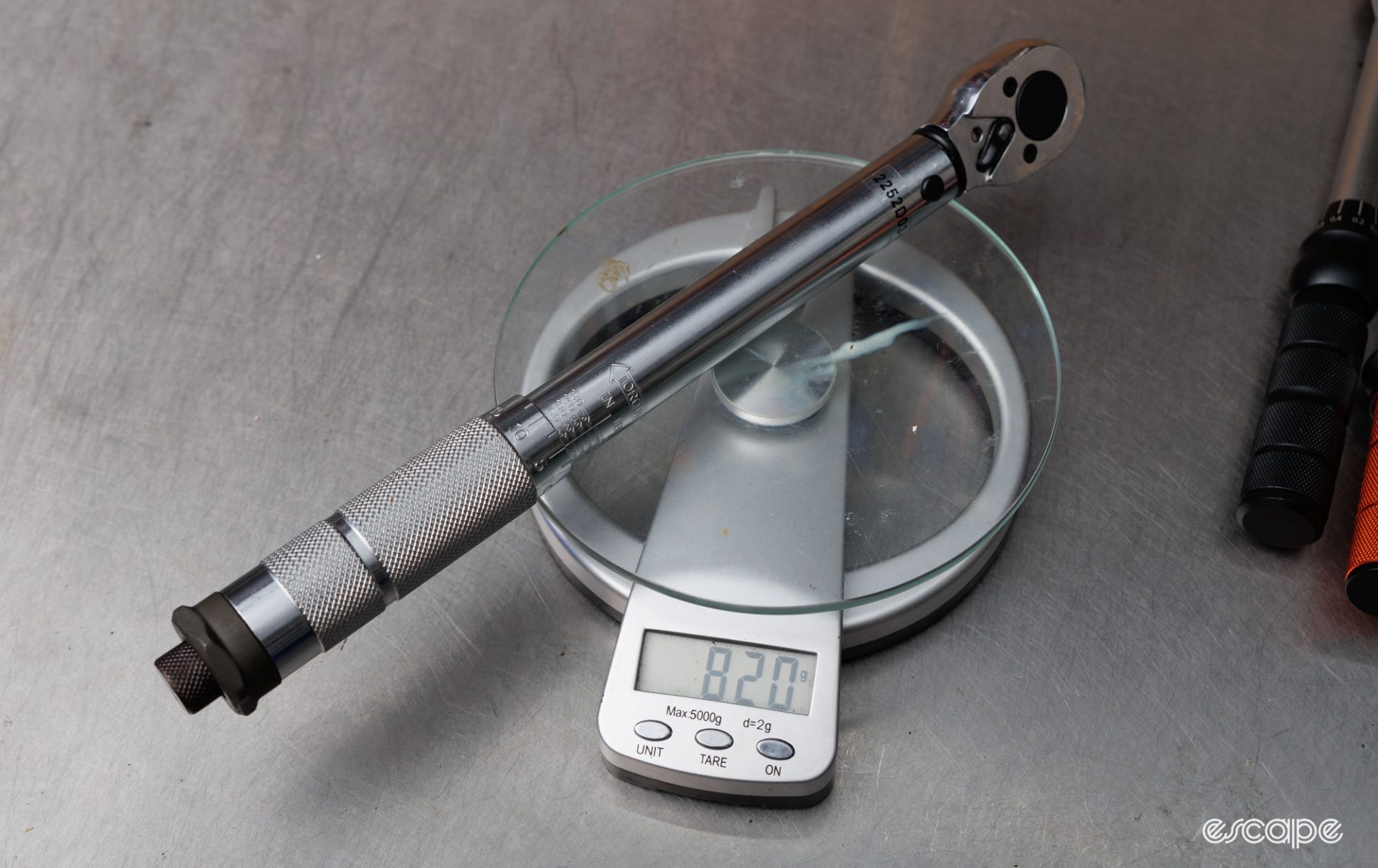
Unfortunately, the 56T ratchet head (likely shared with the 3/8″ tool) is so bulbous that the entire wrench is rendered redundant anytime a bolt has limited surrounding clearance – such as with most binder-wedge-based seatpost clamps. Further hurting it for bicycle use is that this wrench is only stamped with Freedom Units (Imperial) and requires your own conversion to the newton-metres printed on most bicycle parts.
If that weren’t enough to skip it, you set the torque by turning the knurled handle and then locking it into place with the base set screw. Unfortunately, this doesn’t hold all that tight, and it is possible to adjust your set torque inadvertently while in use. Plus, when you do hit the desired torque, the wrench almost whispers it to you in an attempt to trick you into over-torquing. Speak up, Pittsburgh!
OK, all of those significant issues aside, it’s impressively good in terms of accuracy. Set to the nearest Freedom-to-the-Eagle unit of 5 Nm, I measured the wrench with a mean average of 5.08 Nm across 10 cycles (4.71 and 5.41 Nm were the min/max). Meanwhile, set at 8 Nm, I got an impressive actual mean average of 7.96 Nm!
Seems you’re not at risk of setting your bike on fire if you use one of these, but I still found the overall form factor to be somewhat limiting.
Amazon Basics
No, this isn’t another Amazon affiliate link article (that’s not what we do here). Instead, I’d seen some positive reviews for other tools in the Amazon Basics range, and this Amazon-branded torque wrench looked to have a proven, familiar design for an impressive price of AU$49 shipped (approx US$32). Just beware, Amazon also has its name on a similar wrench to the Pittsburgh above. Best avoid that one.
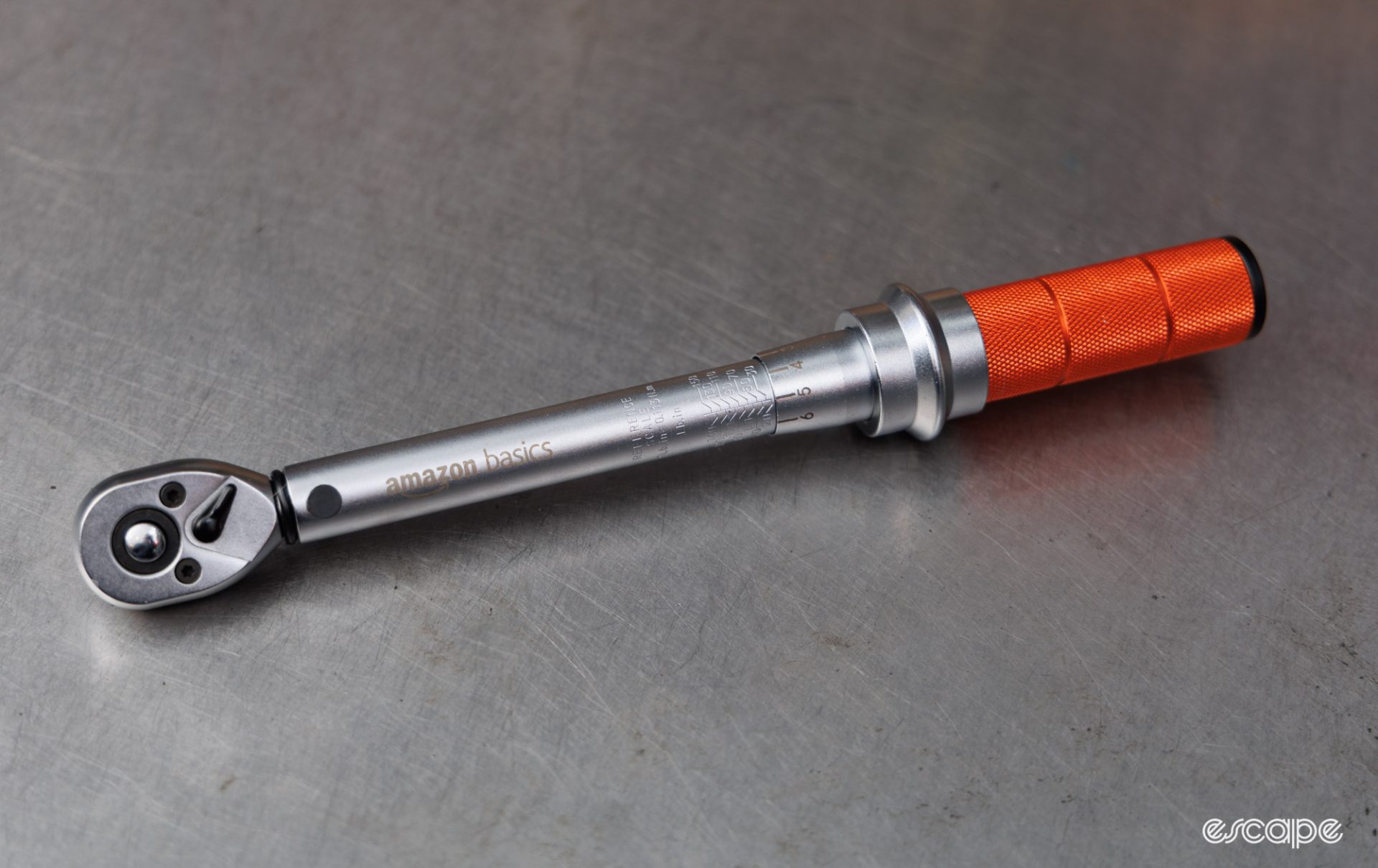
This torque wrench has a useful 2.5-15 Nm range, a nice fine-tooth ratcheting head with a locking 1/4″ square drive, and a surprisingly high-quality feel. Adjusting the torque can be done after pulling down on the detented sprung collar that stays put while you adjust – a more premium feature. Like with the Pittsburgh, your money gets you the torque wrench and a blow mould case, but it’s BYO sockets.
While not officially claimed to do so, this wrench does click off with a positive sound in both clockwise and counter-clockwise directions. It’s also reasonably accurate with a measured mean average of 5.13 Nm (4.71 and 5.55 Nm min/max, though most clicks are closer to an actual 5 Nm) when set to 5 Nm. Meanwhile, at 8 Nm, the wrench was constantly overshooting, with a measured mean average of 9.19 Nm. Good at lower torque, but arguably a fail as the torque increases.
The alignment of the micrometer scale is also ever so slightly off and can be difficult to see in certain light, which doesn’t only make setting torque a little more confusing but is a recipe for inadvertently having the wrong torque setting.


It’s a shame my sample over-torqued by almost 15% in some settings as it’s otherwise a nice tool to use. Perhaps my single sample is a little over-sprung and others are good, but short of buying a bunch more I can’t definitively answer that.
ThinkRider NL-15 Pro, AliExpress’ highest voted
With dozens upon dozens to choose from, it proved a tough task to pick one torque wrench from AliExpress. Finally, I settled on the 2-20 Nm 1/4″ square drive wrench from ThinkRider for its most positive reviews at the lowest price.
It arrived with no padding surrounding the blow mould plastic case, and judging by how all 13 of the included 1/4″ sockets had been shaken loose, I’d say it had quite the ride. Still, given that those sockets are of a usable quality, and for AU$41.59 (approx US$28) shipped, it’s hard to complain.
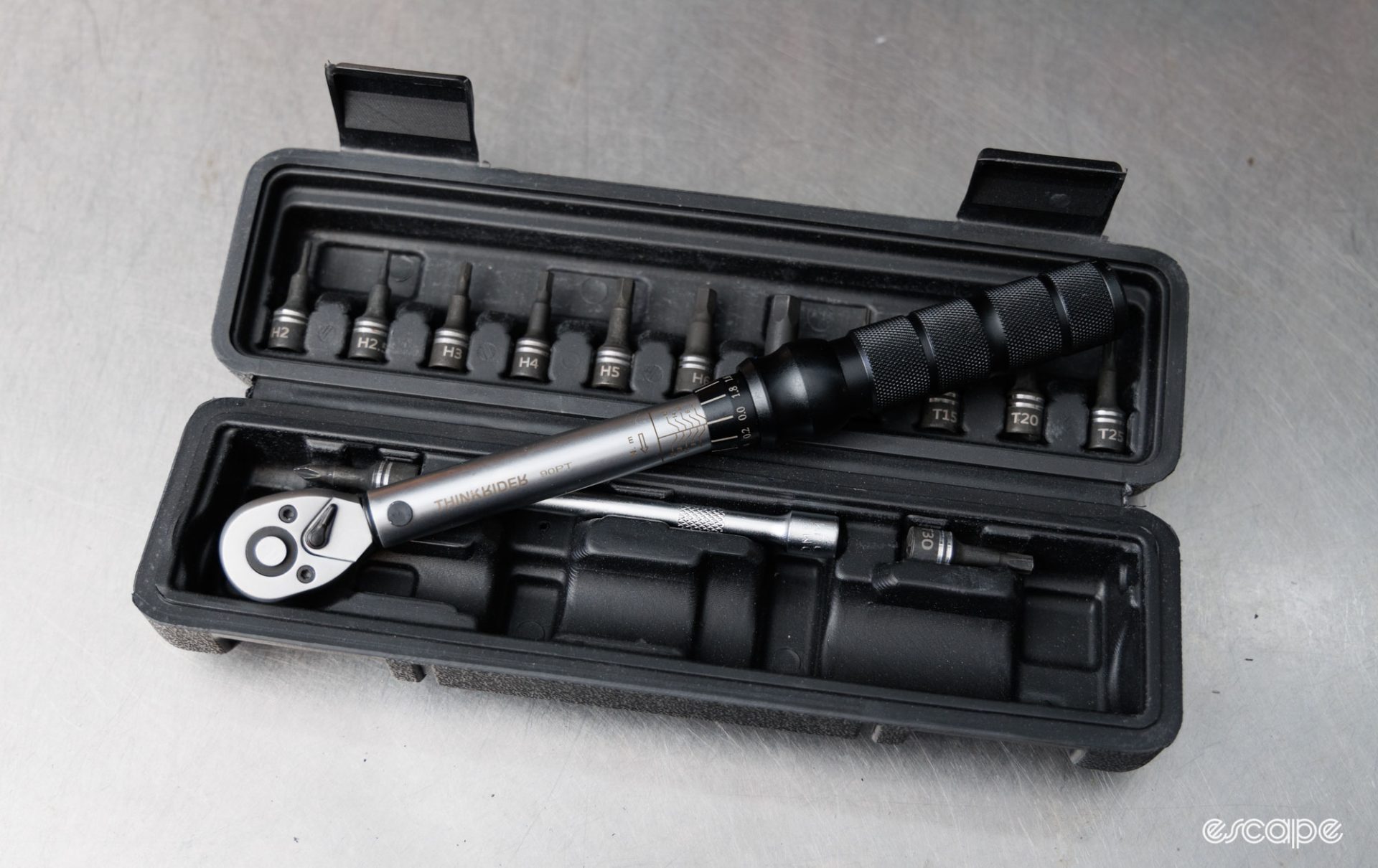
Turns out the ThinkRider is extremely similar in form to the Amazon Basics wrench. The ratcheting head, with its 28 mm width and locking square anvil, is identical to the Amazon save for the surface finish. The rest of the wrench is similar, too, but the locking collar is sprung without a detent to hold it in place (making it more annoying to adjust). Meanwhile, that simpler aluminium collar means the wrench is 76 grams lighter, too.
Compared to the Amazon Basics wrench, the click is equally as positive. The micrometer scale is more visible, but still tiny. And I like its longer knurled handle (always hold a torque wrench by the provided handle). Plus, it’s more accurate with a mean measured torque of 4.8 Nm (4.34 and 5.06 Nm min/max) when set at 5 Nm, and 7.9 Nm when set at 8 Nm.
I used prior knowledge and new research in selecting these three budget torque wrenches. For me, this ThinkRider is the best of the three tested. While it’s undoubtedly not the only option to consider, I feel confident to recommend it – something I can’t say for the other two.
The unknowns of cheap
Torque wrenches are a precision tool, and precision typically carries a high cost. While some of these cheap tools proved to have more than adequate accuracy, they showed signs of lacking precision (read more on accuracy vs precision). Of course this a tough topic with only one sample of each torque wrench, but the findings here closely align with previous tests I’ve done.
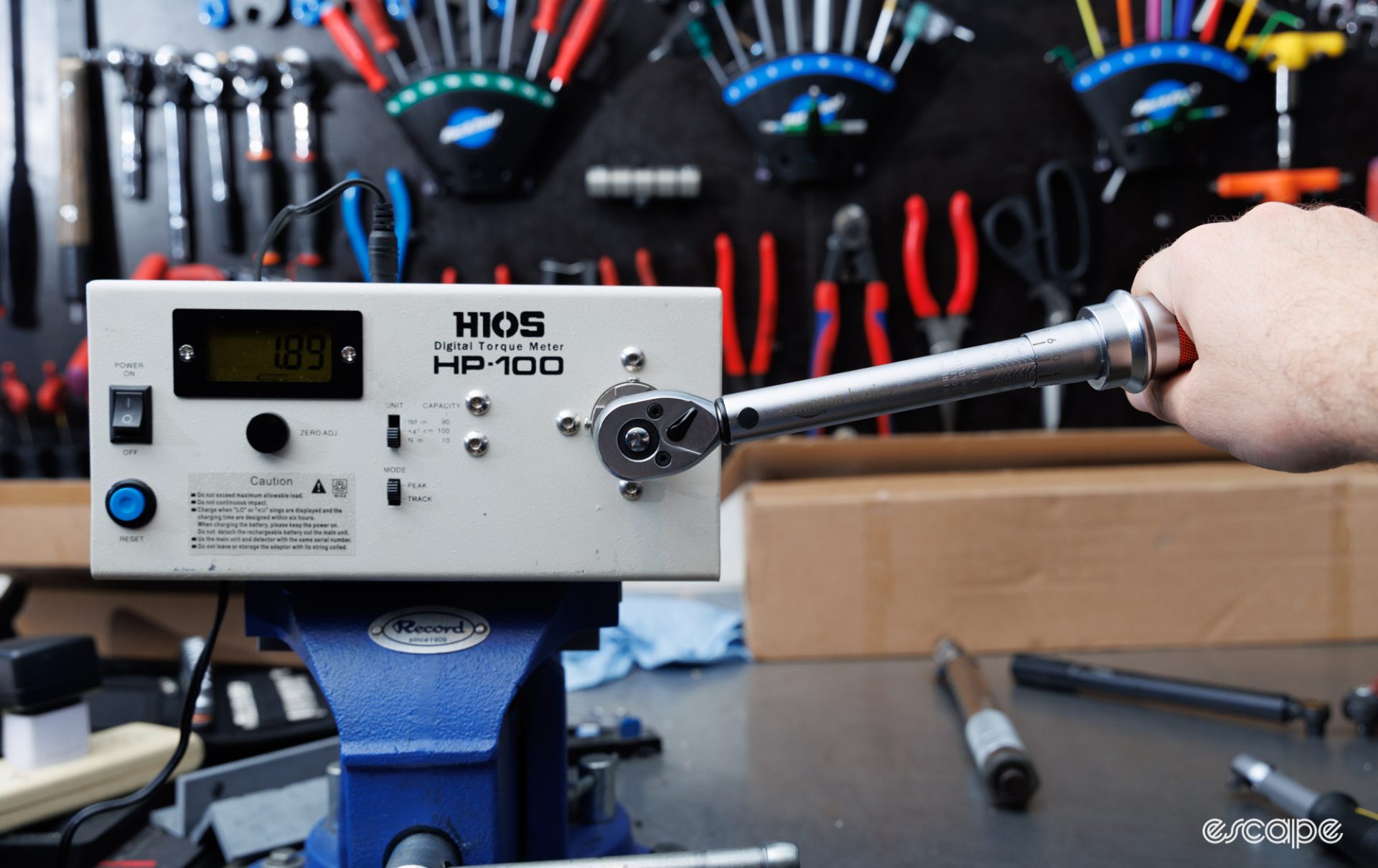
Torque wrenches are a technical tool where manufacturing is commonly outsourced to specialists. One example is British torque specialist Norbar (now owned by Snap-On), which has a long history of producing tools for other brands, and indeed, other examples can be found around the globe. However, there are unknowns associated with buying low-cost precision tools, and it’s fair to pose questions about quality control and whether the supplied calibration certificate (not provided with a few of these tools) is even related to the wrench in your hand.
The reality of the modern world is that you can find almost identical-looking torque wrenches (or really any other product) sold under hundreds of brands you’ve never heard of. Sometimes these are the same in every way, other times they may look the same, but are made to lower quality control requirements (such as being sold from another brand’s scrap pile). And then, there’s the risk of cheap copies or even counterfeits (a common issue Mitutoyo faces with its digital calipers).
All of this is to say that putting together a test of cheap torque wrenches proved difficult. Over the months of research and testing I saw different brands and subtly different designs rise to the recommended sections of AliExpress and Amazon. Meanwhile, the increasing use of bots and AI means consumer reviews aren’t quite as trustworthy as they once were. I could spend thousands on endless plastic parcels of cheap torque wrenches and still not have them all, and it’s for this reason there’s always risk to buying cheap.
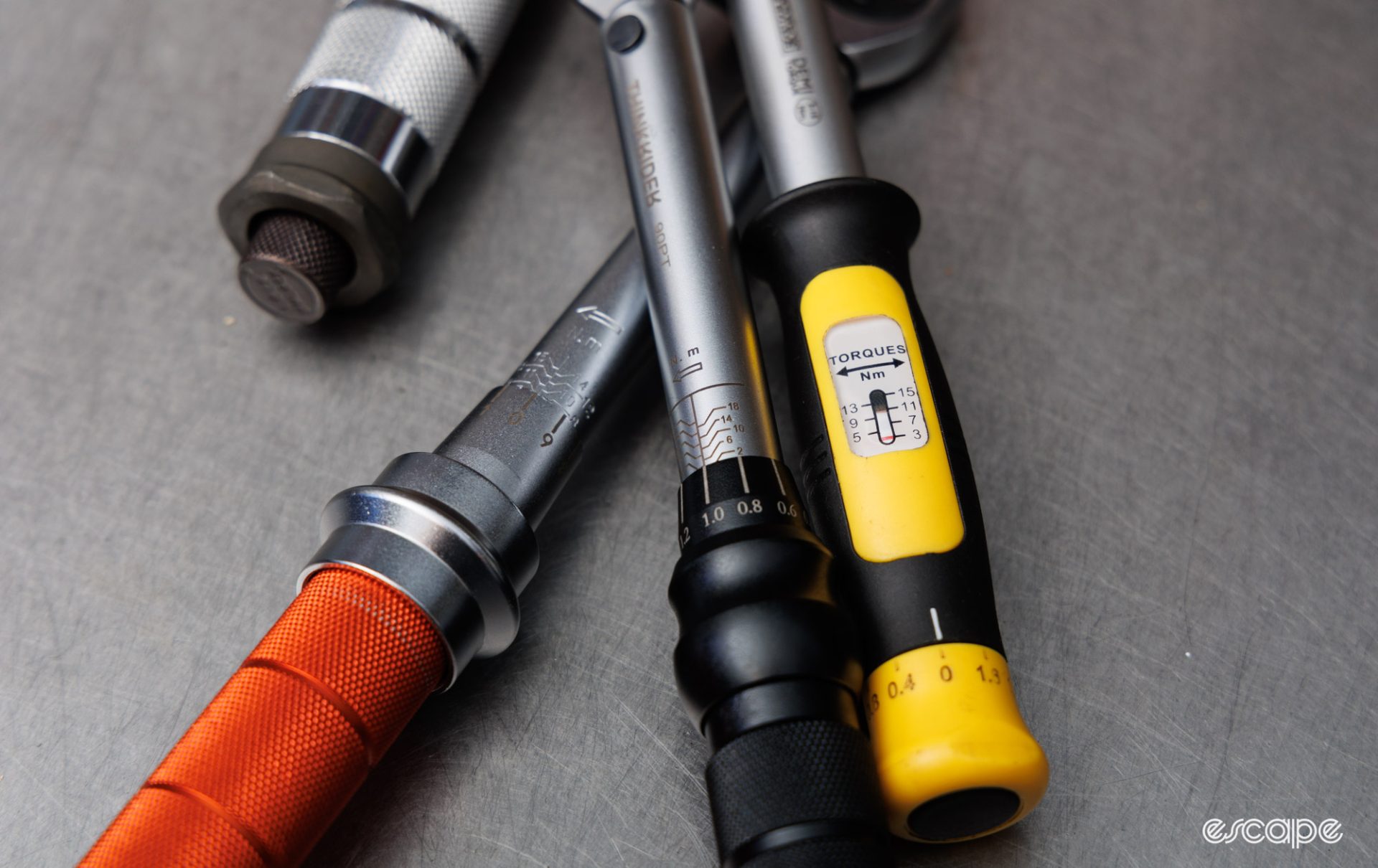
Arguably this is the modern-day value in buying from a known brand name. That brand (hopefully) has a reputation to uphold, and stamping that name on poor-quality products is a short game. The torque wrench sold by PRO Bike Gear, Topeak, or Park Tool may indeed have lots of similarities to cheaper and lesser-known options, but at least those brands know they’ll be accountable for the products they sell.
Sure, the Amazon Basics torque wrench carries a brand name with some level of trust. The same could be said for the Harbor Freight unit. However, in both cases users would forgive a lack of precision given the cost, but I question, what’s the point of a precision tool if it’s not precise?
Brand value aside, spending more won’t always result in a better product. Some brands carry cachet despite putting their name onto otherwise generic products, while others genuinely offer a consistently superior product. I can’t provide a definitive opinion of every brand available, but below are a few trusted and more-premium options to consider.

Effetto Mariposa’s Giustaforza 2-16 Pro torque wrench (made by Tecnogi) offers one of the most compact profiles, an impressively smooth ratchet head, quick torque adjustment, and dependable accuracy. The Norbar TTI20 is another high-quality tool, and while I don’t like that it’s slow to adjust through its torque range, it does everything else with a quality feel. Meanwhile, the new Wera Safe-Torque introduces a cam-over design so your manual input has no sway on the final torque figure, and my testing shows it offers both high accuracy and precision.
The Pedro’s Demi II and Park Tool TW-5.2 don’t offer the same quality level as those above (or some other professional options), but they do introduce significantly faster torque adjustment, often more-compact ratcheting heads, and suitably compact sizing for the torque. Related, you can buy similar, albeit more simply dressed, 3-15 Nm torque wrenches from brands such as BBB (BTL-73), XLC (TO S41), PRO Bike Gear (PR 100340), etc. and in my experience, these are perfectly good options if the price is right. Just be careful as some of these brands also offer cheaper models that can lack accuracy.
A first-time buyer’s guide
Many of the more torque-sensitive components on a bicycle will typically have fasteners within a M3-M6 size, and the responding torque typically sits somewhere between 3 to 15 Nm. Most often, fasteners of these sizes feature a right-hand thread (lefty-loosey, righty-tighty), and so a torque wrench that only works in a clockwise direction isn’t a deal-breaker.
Keep in mind torque wrenches are often most accurate within 20-80% of the total scale range, so it would be a mistake to regularly use a 10-60 Nm torque wrench for bolts requiring 10 Nm.
There are many types of torque wrenches, including beam-style, pre-set, piston-grip, deflecting beam, digital, and clicker-type. This article has focused on the most common clicker-type torque wrench, a workshop-style spring-based torque wrench type that makes a tactile and audible click when the desired torque is reached.
When wrenching on bicycles, it’s common to find fasteners with surrounding clearance limitations, such as those around seatposts or handlebars. Here, a torque wrench with a compact ratcheting head is superior and often more cycling-specific options reign supreme, while the more general-purpose units introduce compromise.
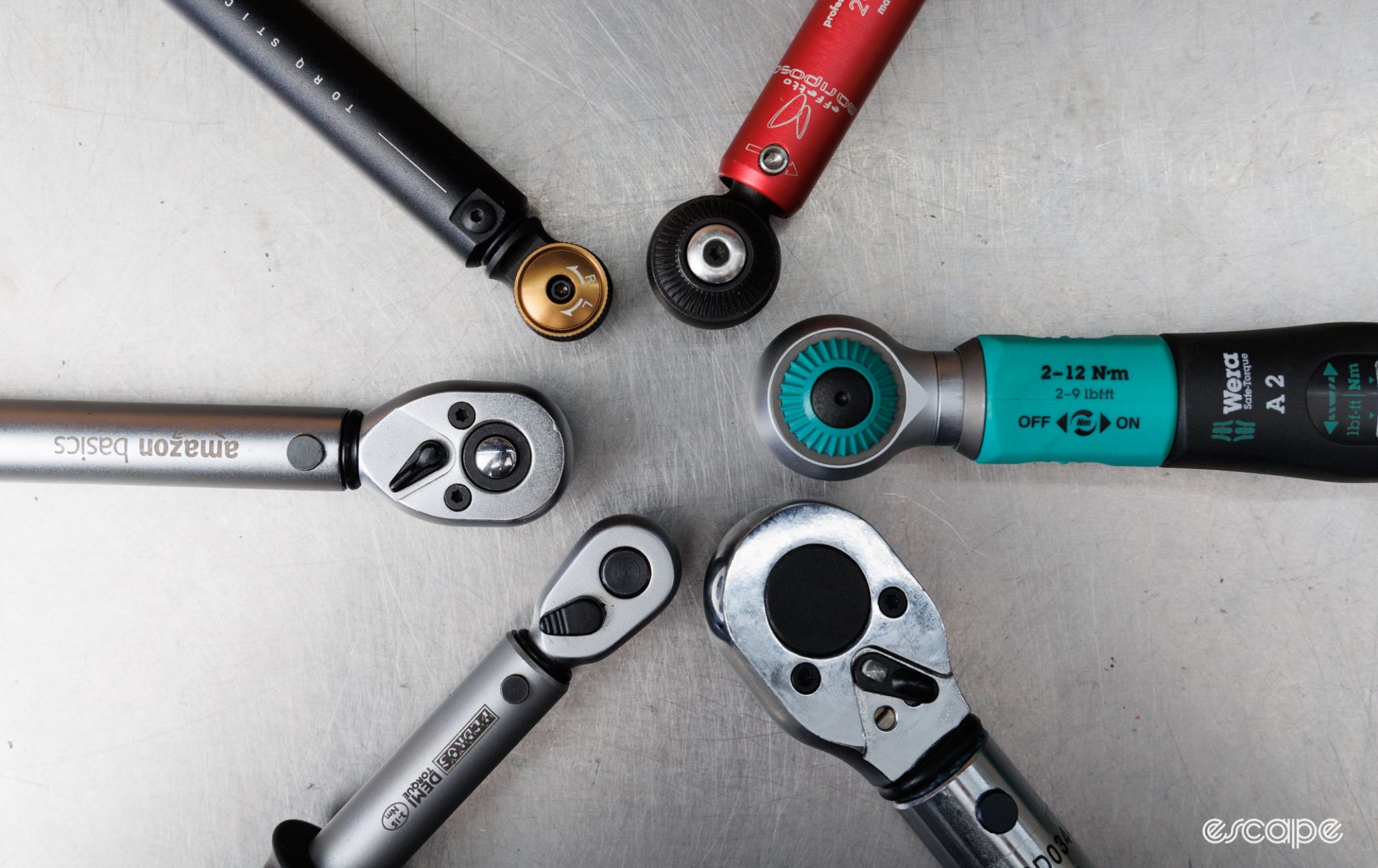
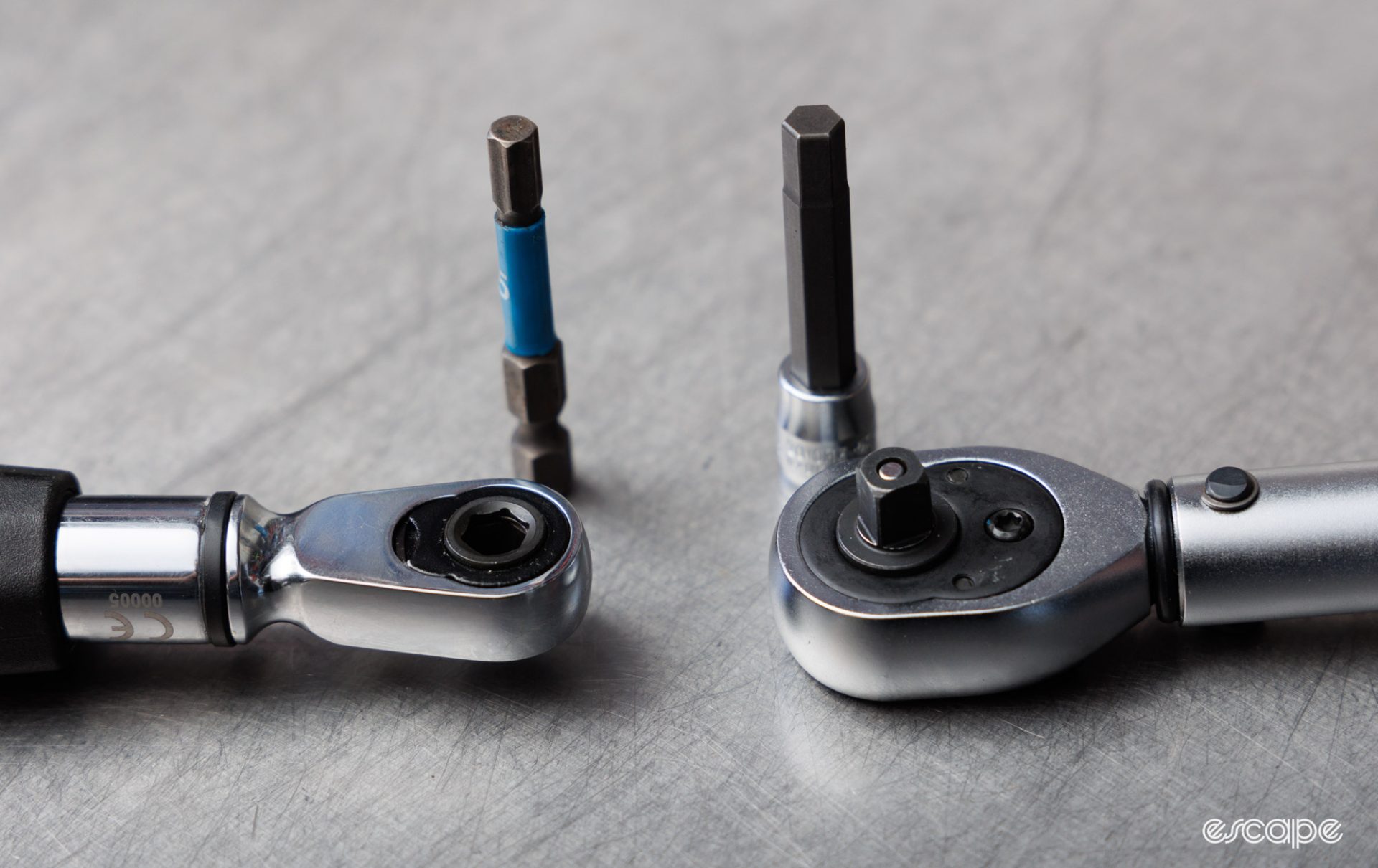
The tool’s ratcheting head also needs to offer an applicable drivesize for the fasteners you’re turning (and perhaps the bits or sockets you own). In this lower torque range that is typically either a 1/4″ (6.3 mm) square drive or a 1/4″ hex drive (not unlike a bit-ratchet). While rarer, you’ll also find torque wrenches of this size with a larger 3/8″ square drive. As an example, Park Tool offers just this to match its socket sets.
Also, look for a clicker-style torque wrench with a scale in the right units (Nm for most of us) and with easily legible figures. Most torque wrenches of this style will lock your torque setting to prevent accidental setting change, many equip a spring and/or detent system, and some fight you with each twist. Finally, I prefer torque wrenches that can be efficiently adjusted through the given torque range. So, for example, many brands (including Wera and Norbar) require a full 360º turn to enact a 1 Nm adjustment, while a few will adjust by 2 or even up to 4 Nm (Pedro’s) in that same full revolution.
Also consider
A clicker-style torque wrench may not be the best option for casual users. With moving components, it’s recommended to have clicker-type torque wrenches checked for calibration after a number of cycles (typically 5,000 – 10,000) or a year of use – although, few in the cycling world do this. Meanwhile, those same moving components can stiffen up without use, and so if it’s been sitting for weeks or months, then it’s recommended to adjust and click the wrench a handful of times before use. Given this, it may make sense to consider a different type of torque wrench.
One great budget alternative is a basic beam-style wrench that relies entirely on sight during use. These merely work on the known flexibility of the material, and so as long as they’re made correctly, then there’s no ongoing concern for calibration. Just ensure you get a metal one – I’ve seen some bad quality control from plastic versions of this tool style. Park Tool offers one for a fair price, but other brands outside of cycling may be worth considering.

Or the right answer may be a more pocket-sized torque tool from the likes of PrestaCycle, Silca, Topeak, or many others. I’m currently working my way through a detailed comparison of just these, and some of them are arguably perfect for casual tinkerers.
For those without a budget then digital is well worth considering, although there’s something to be said for the mechanical feedback of a nice clicker-type wrench.
Pro tips for self-justifying tool purchases
Here’s one I was unfortunately reminded of this week when waking up to the news that Noble Wheels was shutting down production of its fantastic cycling tools with immediate effect. In honour of those gorgeous brass tools, here’s a tip to help you self-justify those new tools you may or may not need:
Your dream tool may not exist forever. Better buy it while you can.
Shameless plugs of the week
While on the topic of cheap tools, it only makes sense to plug a lighthearted conversation my colleague Iain Treloar and I had about buying a ZTTO derailleur hanger gauge off AliExpress. I had planned to review this one, but as you’ll read, it’s actually pretty decent for the low price. Since publishing that piece it seems most colour options have sold out. Ah yes, such is the influence of the Escape Collective.
I’ll also mention a wrap-up of the products that impressed me most in 2023. This isn’t a ‘best of’ or Christmas gift list, but rather six of my favourite products that brought the most stoke to my wrenching and riding worlds … all while having the biggest impact on my wallet (oops).
Until next time, happy wrenching!
Oh hi, one last note. Threaded (and everything else I do at Escape Collective) is wholly and solely funded by our members. If you haven’t already, please consider becoming a member. And if you’re reading this on your lunch break with five filthy bikes still to finish today, please know that we have ultra-special rates for the professional mechanics of the industry.
And if you haven’t already, please sign up to Threaded so you don’t miss future editions (it’s free and you’ll only get my emails).
What did you think of this story?

